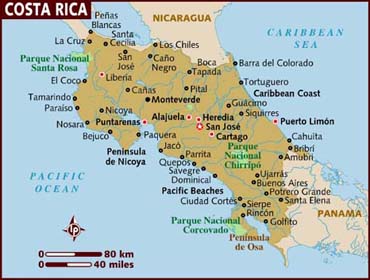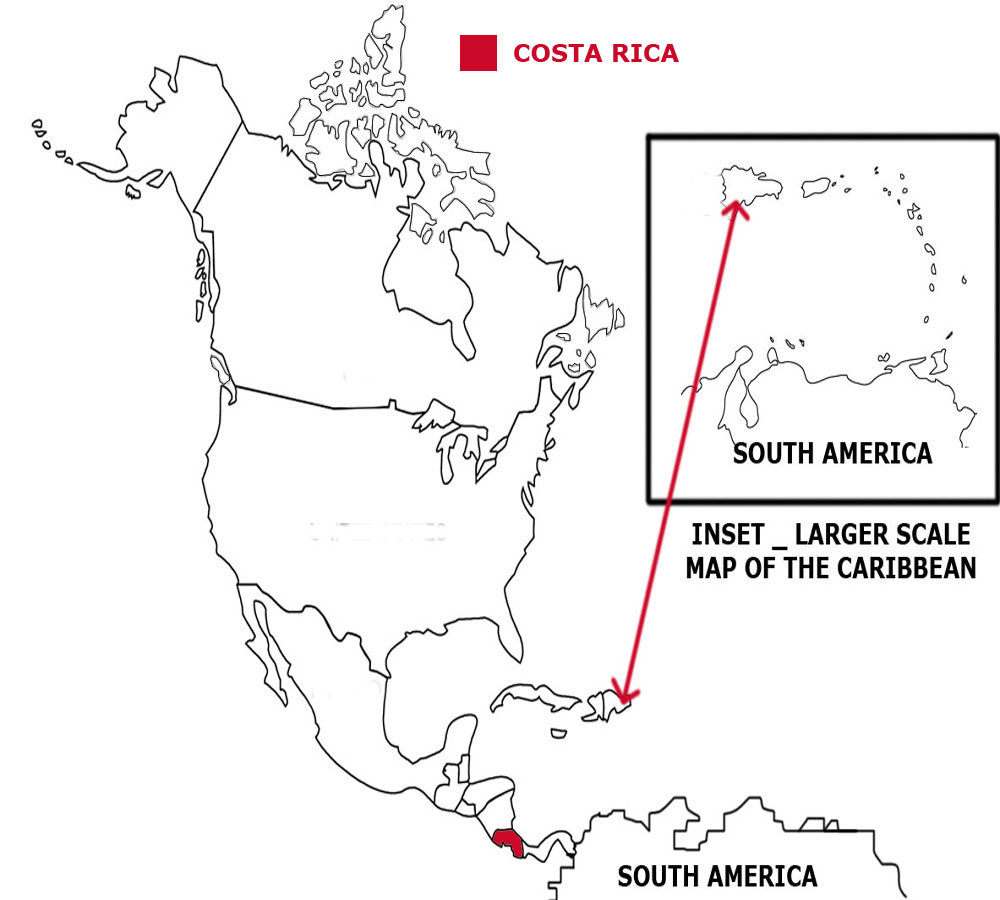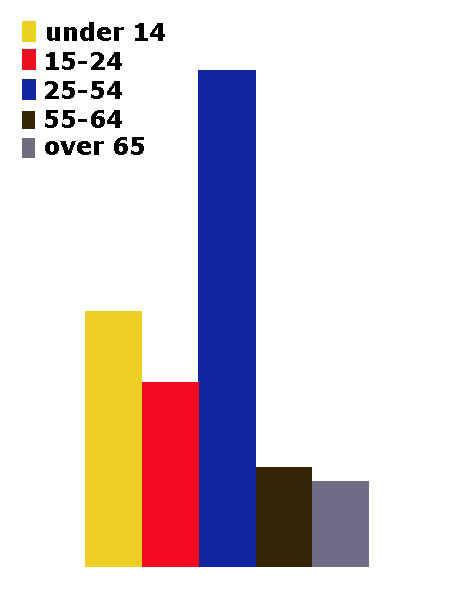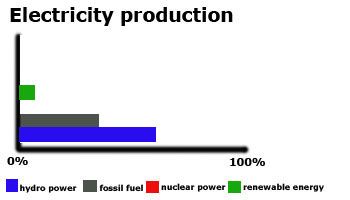Where is Costa Rica?
About Costa Rica
The Land
The People
Life and Death
Health, Energy and the Environment
Education and Work
Travel, Communication and the Media






Back to the Flags of North America page




Costa Rica is an avergae size country in the south of North America.
Costa Rica has a border on the Caribbean Sea in the east and the Pacific Ocean in the west.
The land is a mixture of mountains and coastal plains. Costa Rica has over 100 volcanic cones, some of which are active.
The geographical coordinates for the centre of Costa Rica, also known as lines of latitude and longtitude, are:-
Latitude - 10 00N
Longitude - 84 00W


Check the weather in San Jose now.
This is the time in San Jose now
 The Costa Rican flag is 3 horizontal
bands of blue, white, red, white and blue with the central red stripe being twice the size of the others. The Costa Rican coat of arms is shield shaped and has
3 smoking volcanoes. 2 ships, the sun and 7 stars representing the seven provinces in the country. The outside of the shield is formed with symbols of coffee beans.
The words America Central and Republica De Costa Rica are above the shield.
The Costa Rican flag is 3 horizontal
bands of blue, white, red, white and blue with the central red stripe being twice the size of the others. The Costa Rican coat of arms is shield shaped and has
3 smoking volcanoes. 2 ships, the sun and 7 stars representing the seven provinces in the country. The outside of the shield is formed with symbols of coffee beans.
The words America Central and Republica De Costa Rica are above the shield.
Costa Rica is a presidential republic with a president as head of government.
In elections everyone over the age of 18 must vote.
The currency in Costa Rica is the colon.
Spanish is the official language.
Hear the National Anthem
These are the anthem words
We have already written our own history of England but are asking schools in Costa Rica to provide us with a detailed history of
their own country. Check how here.
![]()
![]() Back to the top
Back to the top

The total land area of Costa Rica is 51,060 sq kms which is the 9th largest in North America.
Costa Rica has lakes, rivers and canals which total 40 sq kms.
Costa Rica has boundaries with 2 countries
- Panama 348 kms
- Nicaragua 313 kms
Costa Rica has a coastline of 1,290 kms which is the 8th longest in North America.
The highest point in Costa Rica is Cerro Chirripo at 3,819 metres.


The total population of Costa Rica is 4.87 million people, making it the 11th largest country in North America by population.
Of this number 2.43 million are females and 2.44 million are males.
A person from Costa Rica is called a Costa Rican.
To be a citizen of Costa Rica you must be born in Costa Rica or one of your parents must be a citizen of Costa Rica. You have to live in Costa Rica for
7 years before you can begin to apply for citizenship.
The largest five cities in Costa Rica, by population are:-
- San Jose 335,007 people
- Puerto Limon 63,081
- San Francisco 55,923
- Alajuela 47,494
- Liberia 45,380
 Each little Owlbut is 1 person and
the big yellow rectangle is 1 sq km. After a while you can compare countries and see which ones are the most crowded. Remember it is only an average as
more people live closer together in towns and cities than in villages out in the country.
Each little Owlbut is 1 person and
the big yellow rectangle is 1 sq km. After a while you can compare countries and see which ones are the most crowded. Remember it is only an average as
more people live closer together in towns and cities than in villages out in the country.

76.8% of the people live in cities or towns.

The birth rate in Costa Rica is 15.7 births per 1,000 of population
The death rate in Costa Rica is 4.6 deaths per 1,000 people.
Check this against the birth rate. If the death rate is higher than the birth rate then
the population will decrease unless immigrants arrive in the country.
There are 7.4 deaths of girls under 1 year per 1,000 of births and 9.0 deaths of boys.
The median age for females is 31.3 and for males is 30.4. The median age is that age which divides the population exactly in half so there are the same number
of people above the median age as below it.
We have no information for the average age of a woman when she has her first child.
The elderly dependency ratio is 12.9. This is the number of elderly people (ages 65+) per 100 people of working age (ages 15-64).
The potential support ratio is 7.7. This is the number of working-age people (ages 15-64) per one elderly person (ages 65+). As a population ages, the potential support ratio tends to fall, meaning there are fewer potential workers to support the elderly.



Costa Rica spends 9.3% of its total income on health care.
There are 1.11 doctors per 1,000 people.
There are 1.2 hospital beds per 1,000 people.
25.7% of the population are estimated as obese.
99.6% of the urban population and 91.9% of the rural population have drinking water that is either piped into their home or they have access to a public tap, a protected borehole, well, spring or
protected rainwater collection facility.

Costa Rica releases 7.2 million metric tons of carbon dioxide by burning fossil fuels in the process of producing and consuming energy. This puts it as the 11th highest in North America.

Costa Rica spends 7.6% of its total income on education.
Children usually start school at age 6 in Costa Rica. Primary education is for six years until age 12 and secondary education must continue till 17/18. This may be followed
by further education at a university or college.
Generally the school year consists of 2 terms and starts in the middle of February and finishes at the end of November. There is usually a 2 week
break at the beginning of July.
97.8% of females and males are able to read and write by the age of 15.
20.6% of all people aged between 16 and 24 are not in work. Among females 25.9% are unemployed while with males 17.6% can't find work.
The total number of people available for work in Costa Rica is 2.3 million.
 They work in the following sectors.
They work in the following sectors.
- Agriculture includes farming, fishing and forestry work
- Industry includes mining, manufacturing, construction and energy workers
- Services is everything else

There are 47 paved airports in Costa Rica, which is the 6th highest number in North America.
![]()
There are 278 kilometres of railways in Costa Rica, the 8th longest in North America.
![]()
There are 10,133 kilometres of roads in Costa Rica, which means Costa Rica is in 6th place for the most kilometres of roads in North America.
![]()
There are 5 major national newspapers in Costa Rica.
There are 7.54 million mobile phone users.
18% of the people have a fixed landline.

2.88 million people have access to the internet at home via any device (computer or mobile).


